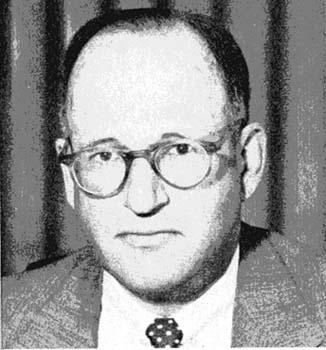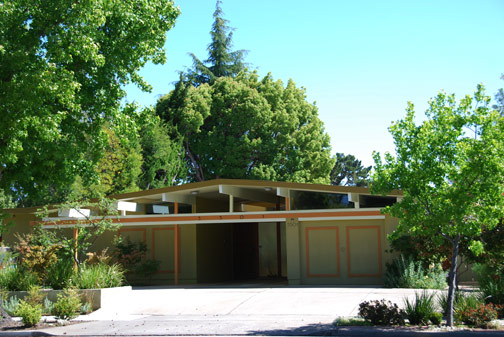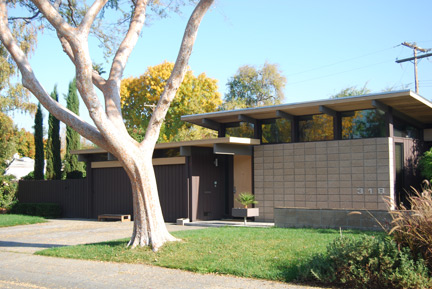 Palo Alto Stanford Heritage
Palo Alto Stanford Heritage 


The 1950s were Joe Eichler’s golden years. From the first 100 Sunnyvale houses in 1950 to over 900 units built in 1955, Eichler continually adapted Robert Anshen’s original AA–1 design (1945–1955) and hired additional talented architects such as Quincy Jones and Claude Oakland. Some say there are six Eichler designs: the flat, shed, single and double gabled roofs intermingled with the courtyard, atrium and gallery. David Eichler, Joe’s grandson and a noted Bay Area photographer, suggests that the “styles” are permutations of the basic design with its classic, clean lines. Eichlers have a cult–like following. Owners are either purists who believe that it blasphemous to alter the original or remodelers who venerate the adaptability of Eichler’s aesthetic. As a realist, David believes that people’s needs have changed and that the quality of Eichler’s design can accommodate modern touches. As a photographer, he plans a book featuring adapted Eichler houses.
Homeowners in Palo Alto fought long and hard to preserve Edgewood Plaza, a landmark shopping center built from ’55 to ‘58 to complement the National Register Eichler neighborhood that embraces it. Eichler Homes’ business office was also located in this quintessentially mid–century plaza designed by Quincy Jones. Despite a preservation agreement, the developer recently bulldozed one of its two significant commercial buildings. David Eichler believes that Joe “would have been flattered that people wanted to preserve it” but might not have been a “gung–ho preservationist.” Of course, any man who, like Joe, told the press “We produce a work of art” might have stood in front of the bulldozer.
By 1959, Eichler Homes, Inc. became the first American home builder to sell its stock to the public. Eichlers had won acclaim and respect. One reason was their design and affordability. Another was that California’s temperate climate perfectly suited the use of glass to “bring the outdoors in” and that the state’s frontier mentality appealed to homebuyers rejecting traditionalism and embracing modernism. The final and most important reason was Eichler himself. Irascible, larger than life and having a short fuse, he was also humorous and charming. David Eichler notes that Joe was not close with his sons and grandsons. Although his grandfather identified culturally with Judaism, Joe and his wife, seemed to believe only in modernity. Competitive, determined and idealistic about design, Eichler was respected for his integrity and for his vision. He refused to compromise on design issues which might lower costs. “We’ll keep doing it right,” he said. Despite complaints from disgruntled neighbors, Eichler sold houses to minorities and, in 1958, resigned from the National Association of Realtors to protest their racially discriminatory policies.
The early to mid sixties brought financial issues that were insurmountable, even for a go–getter like Joe: the company was under–capitalized, land was scarce and expensive, the cost of material had increased and essential skilled labor was harder to find. Despite advice to the contrary, Eichler decided to diversify into low– and high–rise government projects in San Francisco, its Western Addition and Hunters Point–Bayview as well as into luxury high–rises and clustered housing on Russian Hill and Diamond Heights. David notes that his grandfather truly, but erroneously, believed that he could transfer the Eichler aesthetic to these projects.
Eichler is rarely associated with high–end, high–rises yet one of his only successful projects at this time was San Francisco’s Summit, a luxury condominium on Russian Hill built in 1965. Designed by Tibor Feckes, it was San Francisco’s tallest building at 31 stories, including six floors of parking. Most tall buildings taper as they rise but, from the 24th floor up, the Summit flares outward with each floor one foot beyond the floor below. Eichler moved to one of the two penthouses after having to sell his Anshen designed house in Lindenwood, Atherton.
These large projects began to overextend the company. By 1966, Eichler Homes was in financial distress and Joe was hospitalized with heart problems. He summoned his son, Ned to review the company assets. Ned recommended filing for Chapter 11 bankruptcy—a solution that Joe considered shameful and potentially harmful to the completion of Geneva Towers. The Towers was the largest federally sponsored project in the country offering below–market price units. Not only had Vice–President Hubert Humphrey attended its groundbreaking ceremony but, most importantly, it symbolized Joe’s sense of social responsibility. Ned completed the over–budget Towers and managed the million dollar deficit. Desperate to save his company and with 7,000 creditors knocking on the door, Eichler “sold” his stock for promissory notes in May of ‘66 to Charles Parr and Robert Bryson, two enthusiastic but under–funded entrepreneurs. This venture failed. Eichler Homes filed for bankruptcy in 1967. Joe continued to build suburban developments and custom homes and to bleed money. ©
He died in 1974.
(See also Part 1: Joe Eichler and His Houses 1945–1955)
PAST, November 15, 2013
| |
E-mail us at either webmaster@pastheritage.org or president@pastheritage.org.
![]() Palo Alto Stanford Heritage—Dedicated to the preservation of Palo Alto's historic buildings.
Palo Alto Stanford Heritage—Dedicated to the preservation of Palo Alto's historic buildings.
Copyright © 2015 Palo Alto Stanford Heritage. All rights reserved.